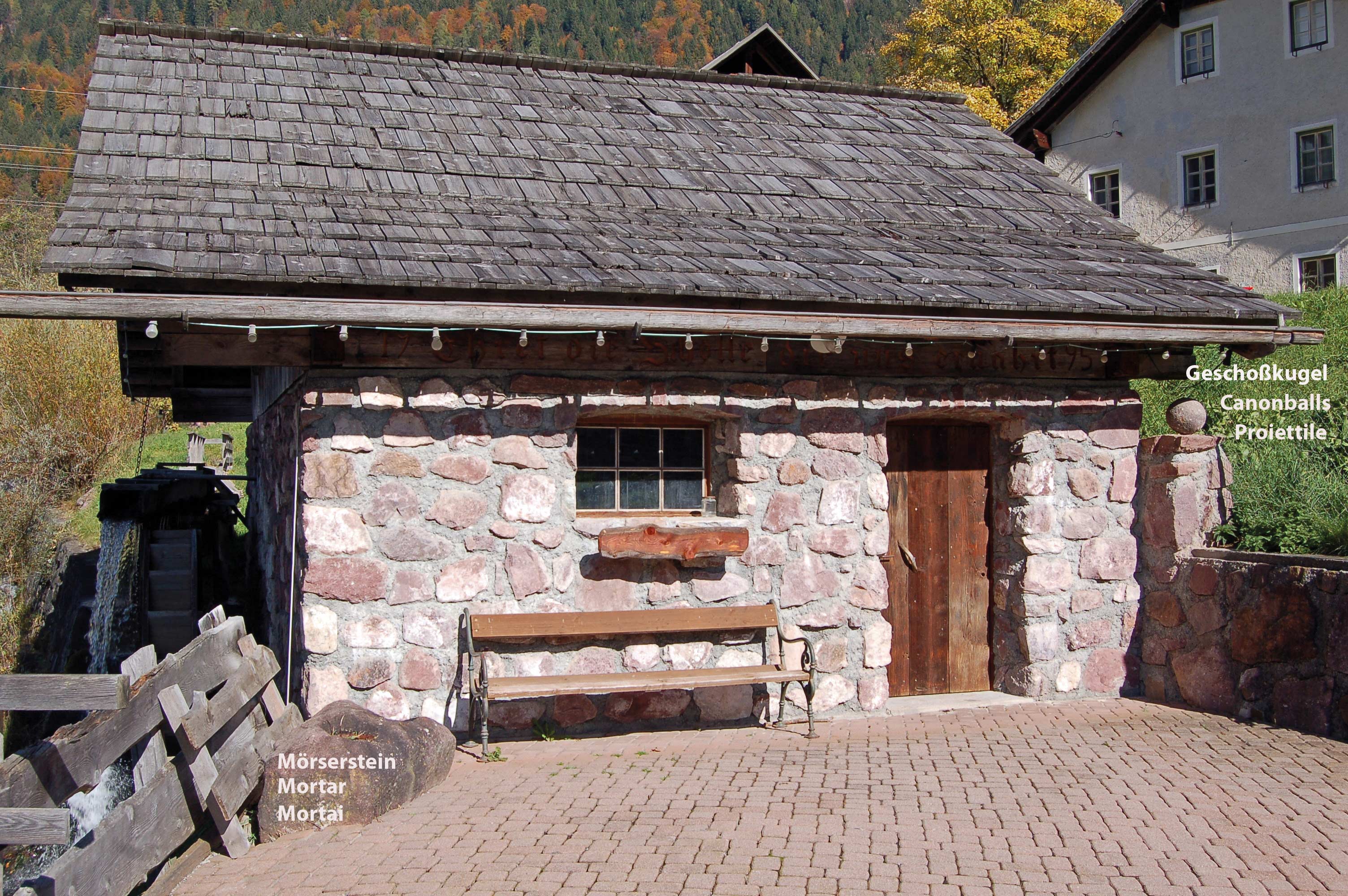In order for a village to develop, two essential foundations of life are required: water and fertile soil. The writing over the door of Laas Mill reminds us of the latter. Soils have a great deal to do with geology because they consist almost entirely of minerals and rocks. In the past, everything people needed to survive was cultivated on the land. This means not only food but also raw material plants such as flax for producing fabrics. Woodland areas provided wood as an indispensable construction material and fuel. Cereals were one of the most important food plants, but had to be ground first to make flour using wear-resistant stones. These stones occur naturally around Laas in the form of red breccias, which are highly resistant due to their quartz content. The mill was not just used to produce flour. Between 1880 and 1930, it people used it to operate threshing and shredding machines at neighbouring farms. The mill is the last in a series of mills, saws and smithies, which were once lined up along the Laas brook.
Cerca
Ultimi Post
- The temporary exhibition “The Wonders of the Underworld – Ampezzo, 20th June 2020
- The Geological Museum in Ampezzo opens next Saturday
- The temporary exhibition “Fossil fish from the Friulian Alps” opens again
- Coronavirus Emergency – extraordinary closing
- Presentation conference – book “INSIDE THE CARNIC ALPS” – Udine, 25th June 2019

